
Section 1: Company Overview and Fundamentals
1.1 Company Overview:
Sony Group Corp (NYSE: SONY) is engaged in the games & network services (G&NS), music, movies, electronics products & solutions (EP&S), imaging & sensing solutions (I&SS), finance and other businesses.
Kalkine’s Diversified Opportunities Report covers the Company Overview, Key positives & negatives, Investment summary, Key investment metrics, Top 10 shareholding, Business updates and insights into company recent financial results, Key Risks & Outlook, Price performance and technical summary, Target Price, and Recommendation on the stock.
Stock Performance:
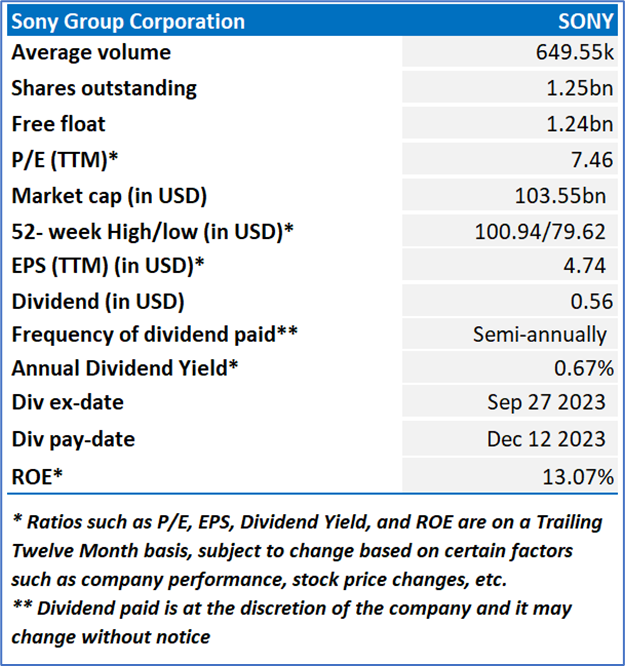
1.2 The Key Positives, Negatives, and Investment summary
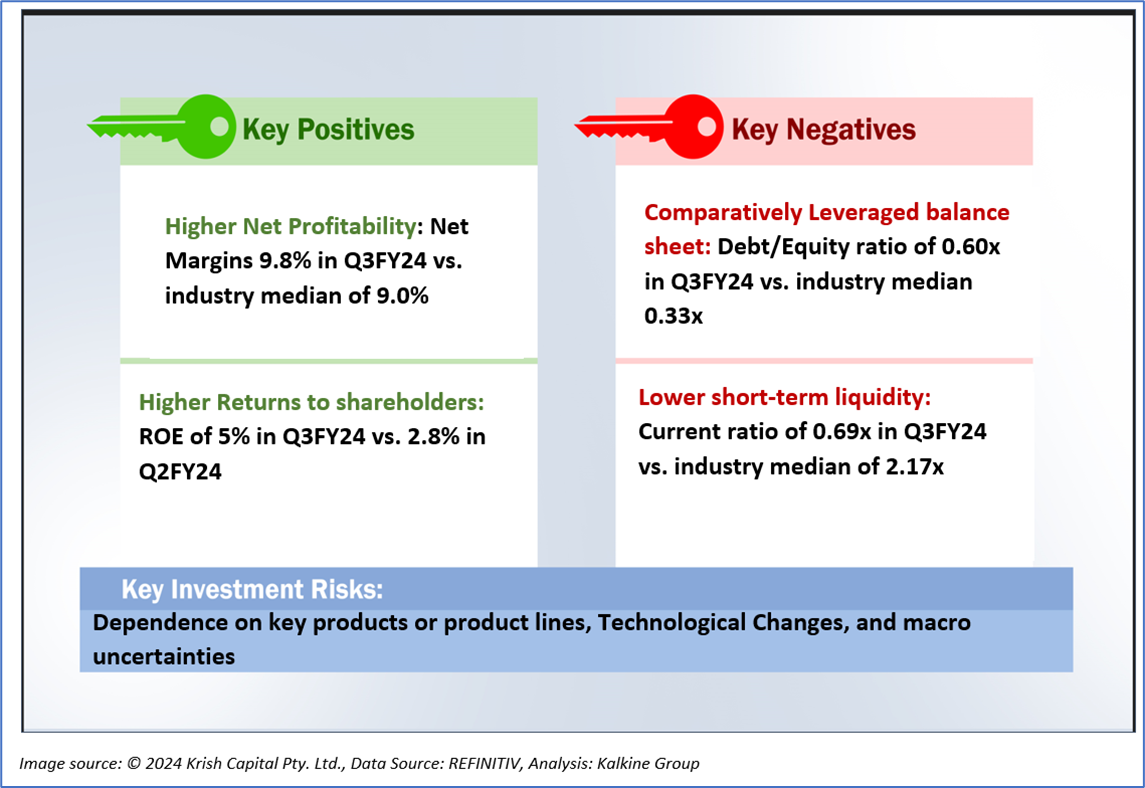
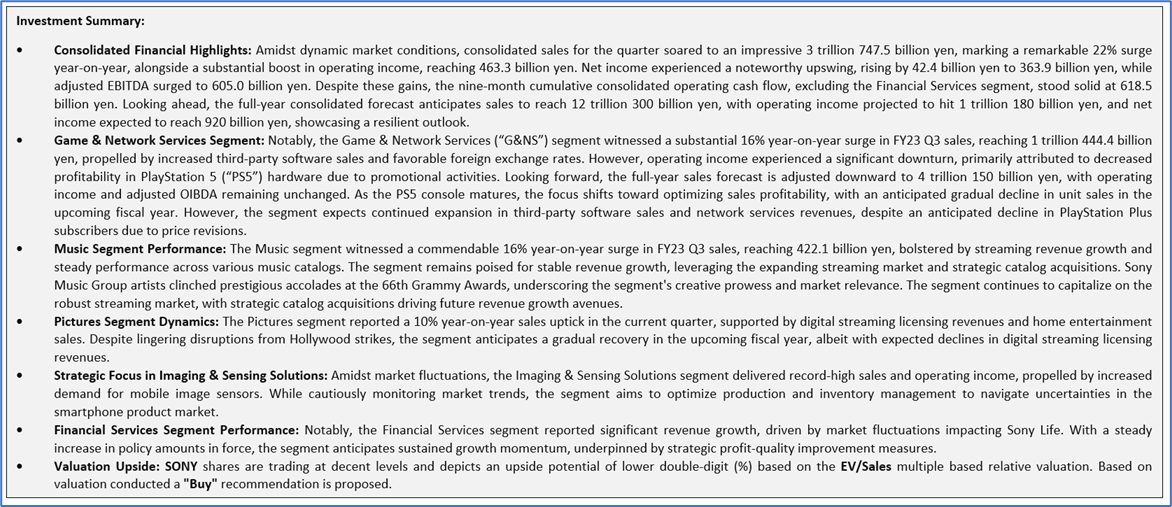
1.3 Top 10 shareholders:
The top 10 shareholders together form ~4.68% of the total shareholding, signifying diverse shareholding. PRIMECAP Management Company, and Aristotle Capital Management, LLC are the biggest shareholders, holding the maximum stake in the company at ~1.82% and ~0.89%, respectively.
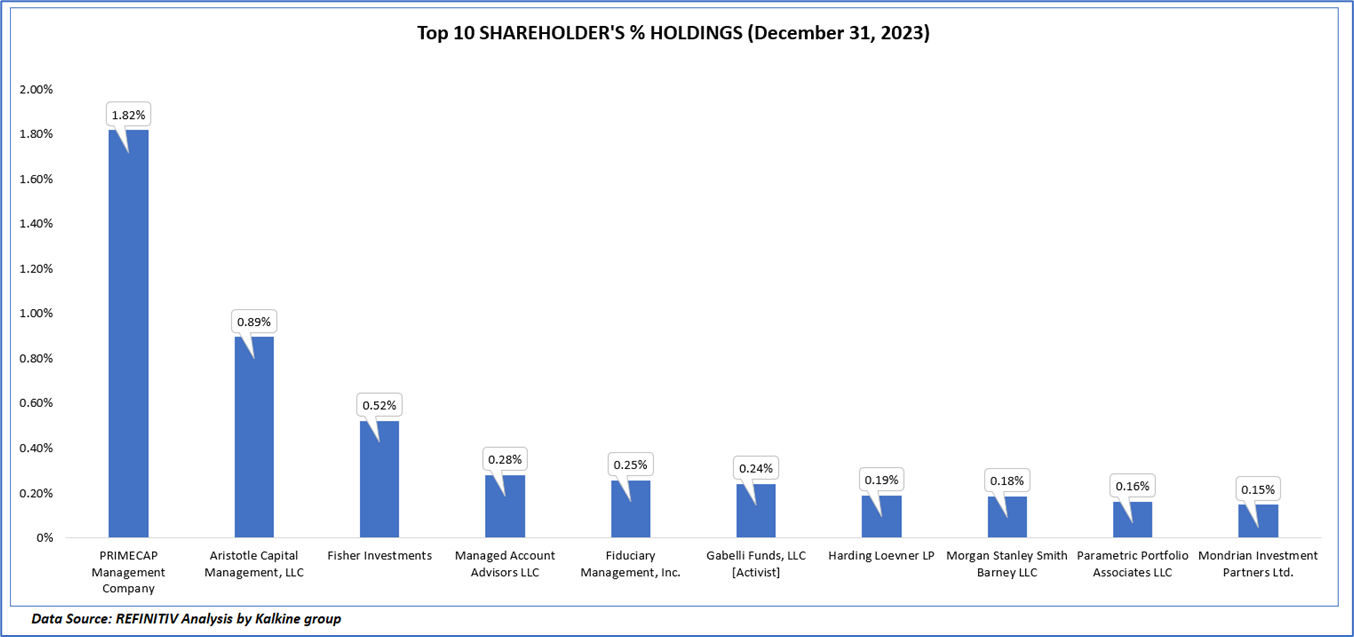
1.4 Key Metrics
The data for Sony in the third quarter of fiscal year 2024 reflects a strong financial performance, with the company surpassing industry median figures across key metrics. Sony's gross margin of 32.0% indicates efficient cost management and pricing strategies, outpacing the industry median by 5 percentage points. Similarly, Sony's EBITDA margin of 19.8% suggests strong operational profitability, highlighting the company's ability to generate earnings before accounting for interest, taxes, depreciation, and amortization.
While Sony's operating margin slightly exceeds the industry median by 0.3%, the company's pretax margin of 12.2% further underscores its ability to generate profits before taxes at a level higher than the industry average. Sony's net margin of 9.8% reflects its ability to convert revenue into net income efficiently, indicating solid bottom-line performance compared to industry peers.
Moreover, Sony's return on equity (ROE) of 5.0% surpasses the industry median of 3.7%, indicating effective utilization of shareholder equity to generate profits. This suggests that Sony is effectively leveraging its resources to create value for its shareholders.

Section 2: Business Updates and Corporate Business Highlights
2.1 Recent Updates:
The below picture gives an overview of the recent updates:
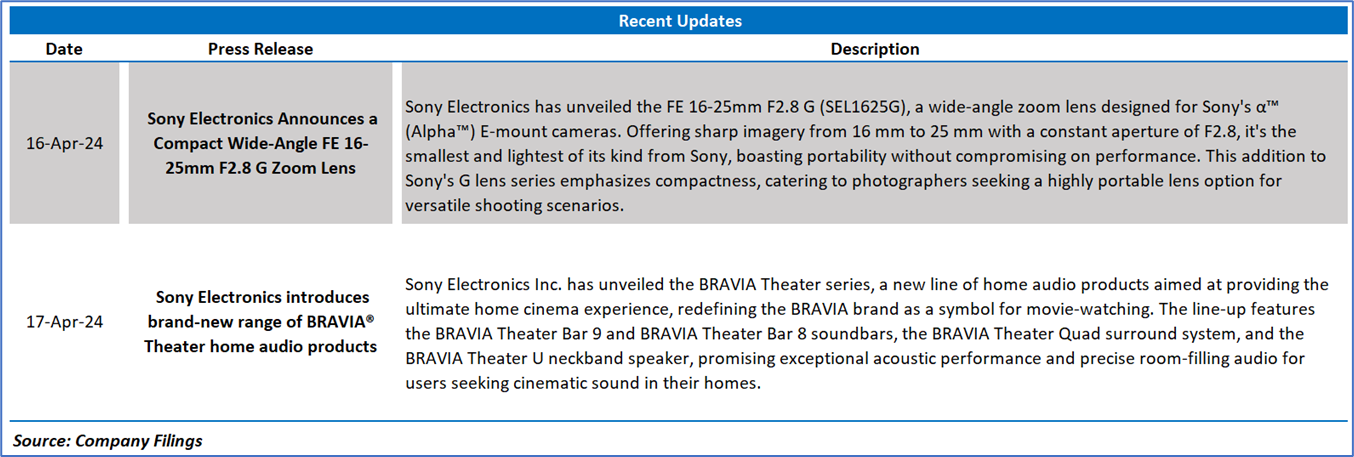
2.2 Insights of Q3FY24:

Section 3: Key Risks & Outlook
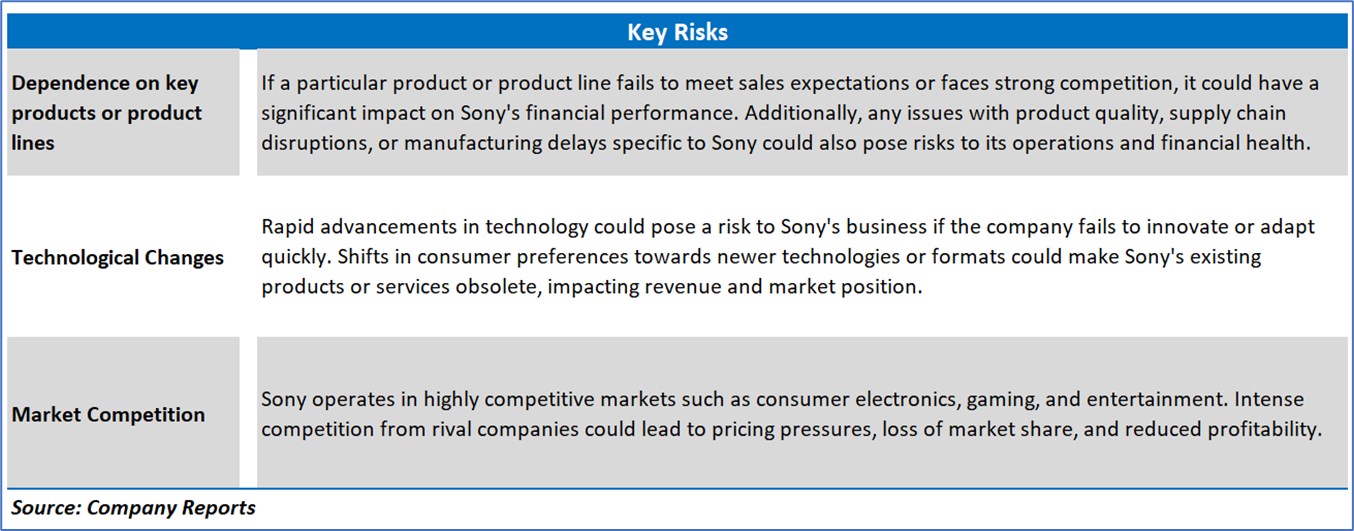
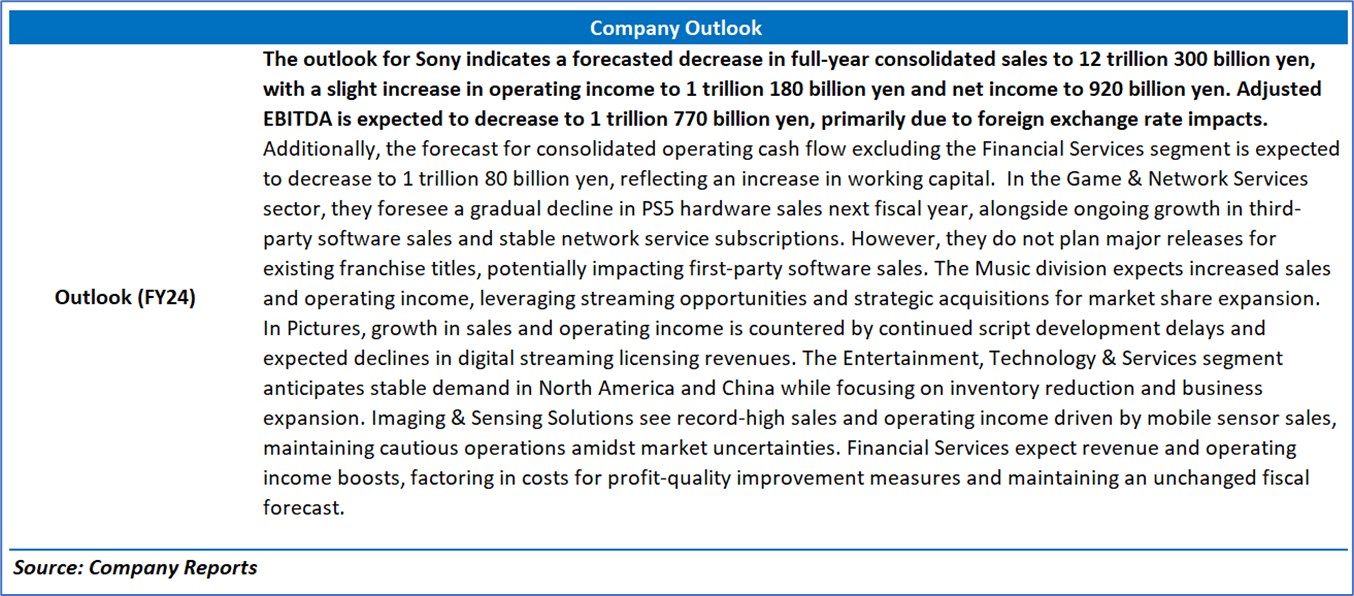
Section 4: Stock Recommendation Summary:
4.1 Price Performance and Technical Summary:
Stock Performance:
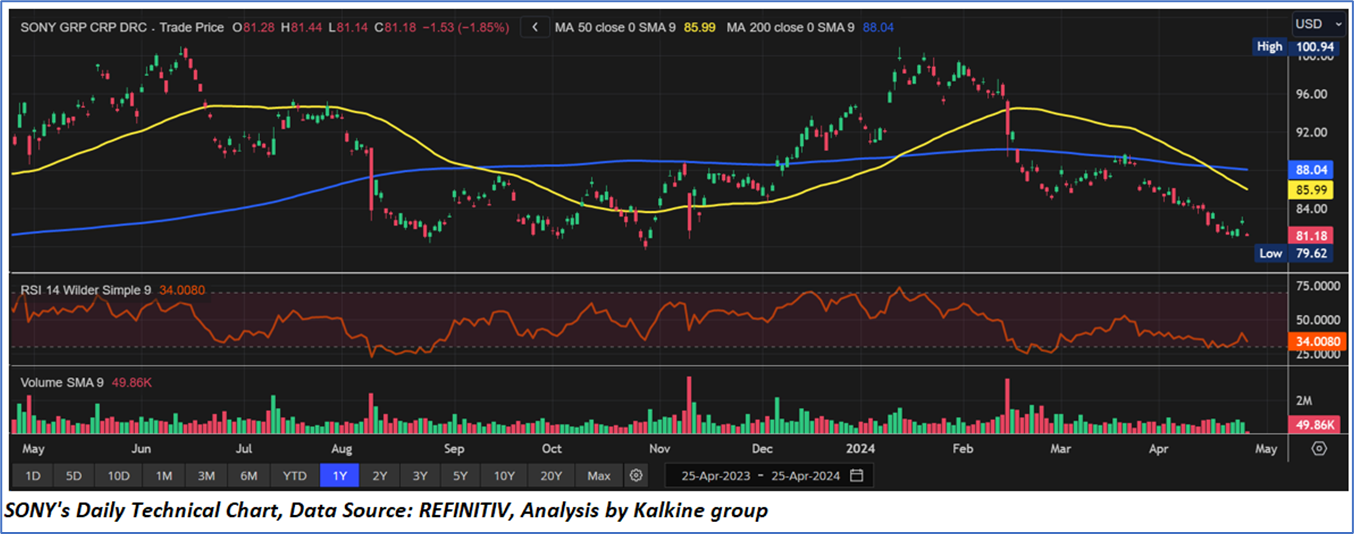

4.2 Fundamental Valuation
Valuation Methodology: EV/Sales Multiple Based Relative Valuation
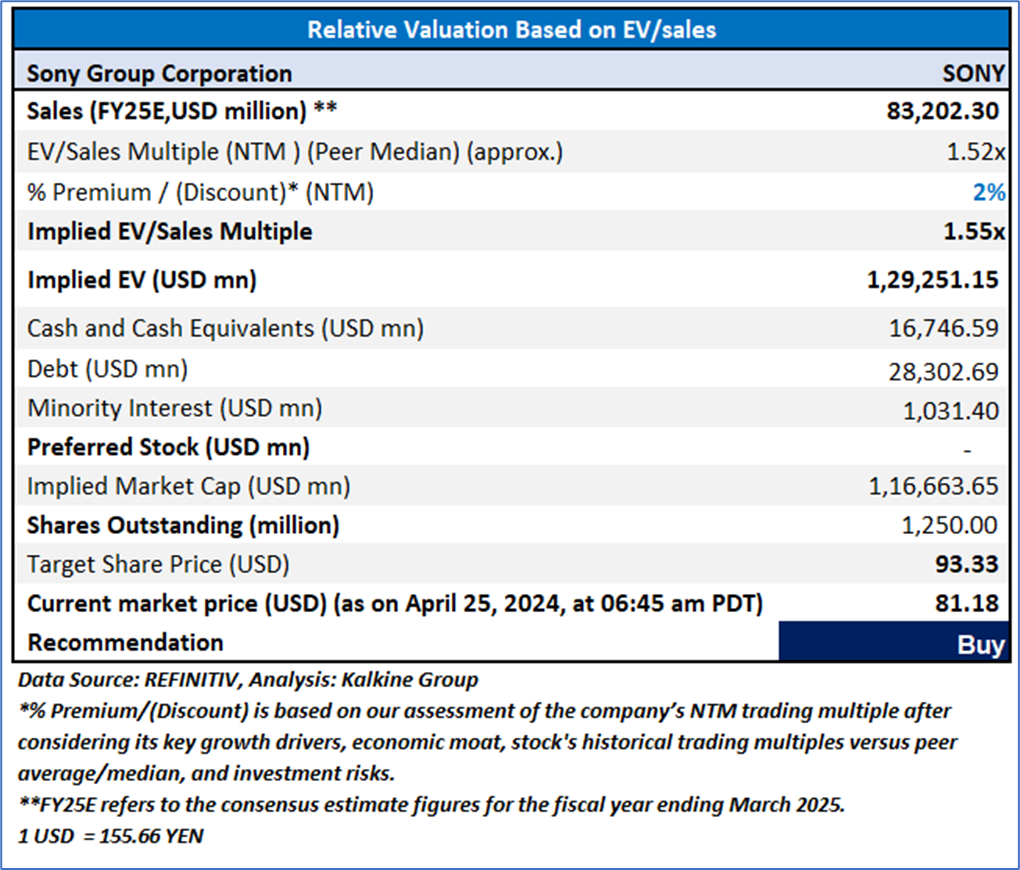
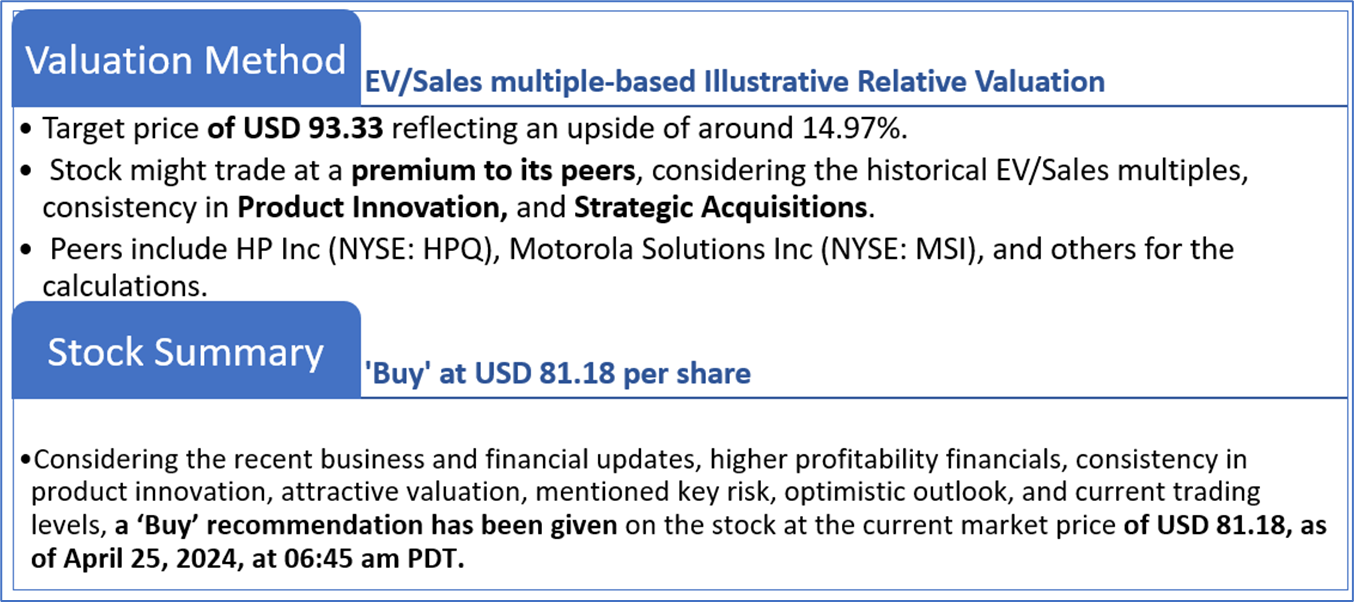
Markets are trading in a highly volatile zone currently due to certain macroeconomic issues and geopolitical tensions prevailing. Therefore, it is prudent to follow a cautious approach while investing.
Note 1: Past performance is not a reliable indicator of future performance.
Note 2: The reference date for all price data, currency, technical indicators, support, and resistance levels is April 25, 2024. The reference data in this report has been partly sourced from REFINITIV.
Note 3: Investment decisions should be made depending on an individual's appetite for upside potential, risks, holding duration, and any previous holdings. An 'Exit' from the stock can be considered if the Target Price mentioned as per the Valuation and or the technical levels provided has been achieved and is subject to the factors discussed above.
Note 4: The report publishing date is as per the Pacific Time Zone.
Technical Indicators Defined: -
Support: A level at which the stock prices tend to find support if they are falling, and a downtrend may take a pause backed by demand or buying interest. Support 1 refers to the nearby support level for the stock and if the price breaches the level, then Support 2 may act as the crucial support level for the stock.
Resistance: A level at which the stock prices tend to find resistance when they are rising, and an uptrend may take a pause due to profit booking or selling interest. Resistance 1 refers to the nearby resistance level for the stock and if the price surpasses the level, then Resistance 2 may act as the crucial resistance level for the stock.
Stop-loss: It is a level to protect against further losses in case of unfavorable movement in the stock prices.
The advice given by Kalkine Canada Advisory Services Inc. and provided on this website is general information only and it does not take into account your investment objectives, financial situation and the particular needs of any particular person. You should therefore consider whether the advice is appropriate to your investment objectives, financial situation and needs before acting upon it. You should seek advice from a financial adviser, stockbroker or other professional (including taxation and legal advice) as necessary before acting on any advice. Not all investments are appropriate for all people. The website www.kalkine.ca is published by Kalkine Canada Advisory Services Inc. The link to our Terms & Conditions has been provided please go through them. On the date of publishing this report (mentioned on the website), employees and/or associates of Kalkine do not hold positions in any of the stocks covered on the website. These stocks can change any time and readers of the reports should not consider these stocks as advice or recommendations later.